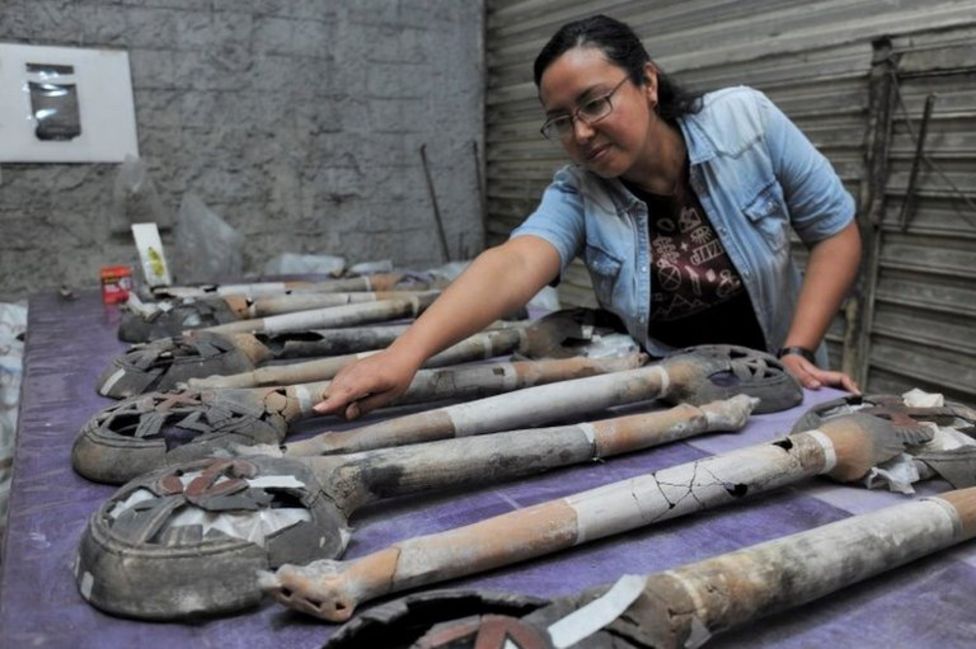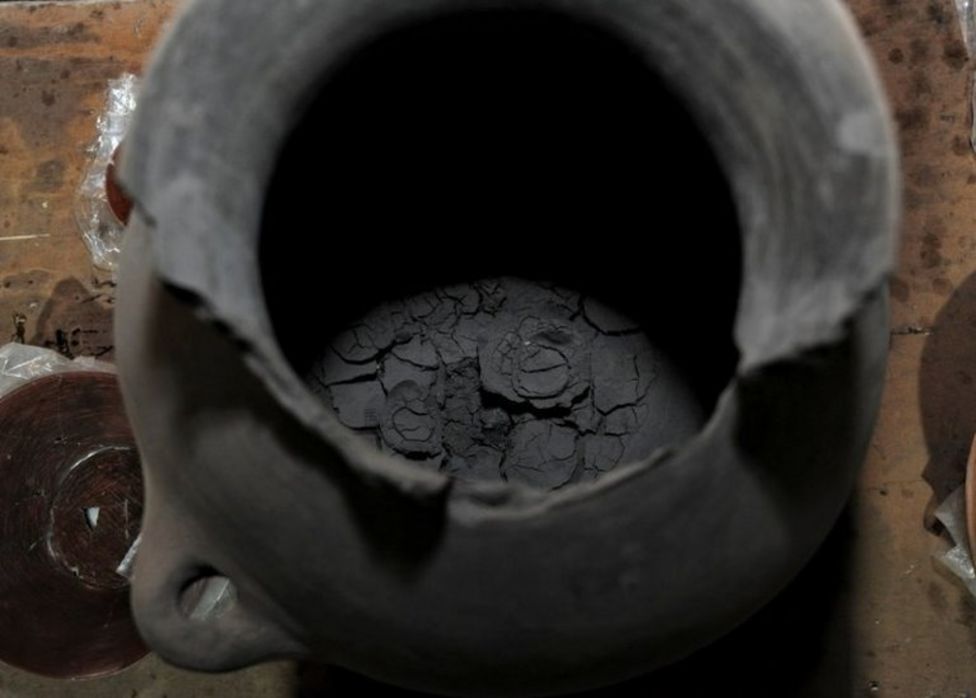Aztec altar with human ashes uncovered in Mexico City
Sometime after Hernan Cortes conquered the Aztec capital of Tenochtitlan in modern-day Mexico City in 1521, an indigenous household that survived the bloody Spanish invasion arranged an altar including incense and a pot with human ashes.

The remains of that elaborate display have been unearthed by archaeologists near what is today Garibaldi Plaza, famed for its revelry and mariachi music, Mexico’s culture ministry said on Tuesday.
In the wake of the fall of Tenochtitlan, likely within the years of 1521 and 1610, the offering from the family of the Mexica people was made “to bear witness to the ending of a cycle of their lives and of their civilization,” the culture ministry said in a statement.
The interior patio where rituals took place is about four meters (13 feet) below ground level, according to a team of archaeologists who spent three months analyzing the site.
They found various layers of what had been home over the centuries, the statement said, along with 13 incense burners, five bowls, a cup, a plate and a pot with cremated skeletal remains.


The finding coincides with the 500-year anniversary of the Spanish conquest, which Mexico’s government commemorated by building a towering replica of the Templo Mayor, the Aztec civilization’s most sacred site, in downtown Mexico City.
A number of ancient discoveries in the Mexico City area in recent years, including some in the capital’s bustling downtown, have shone light on the Aztec civilization. They include the remains of a ceremonial ball court, a sacrificial wolf adorned with gold and a tower of human skulls.
President Andres Manuel Lopez Obrador had previously sought an apology from Spain and the Vatican for human rights abuses committed during the conquest of what is modern-day Mexico.





